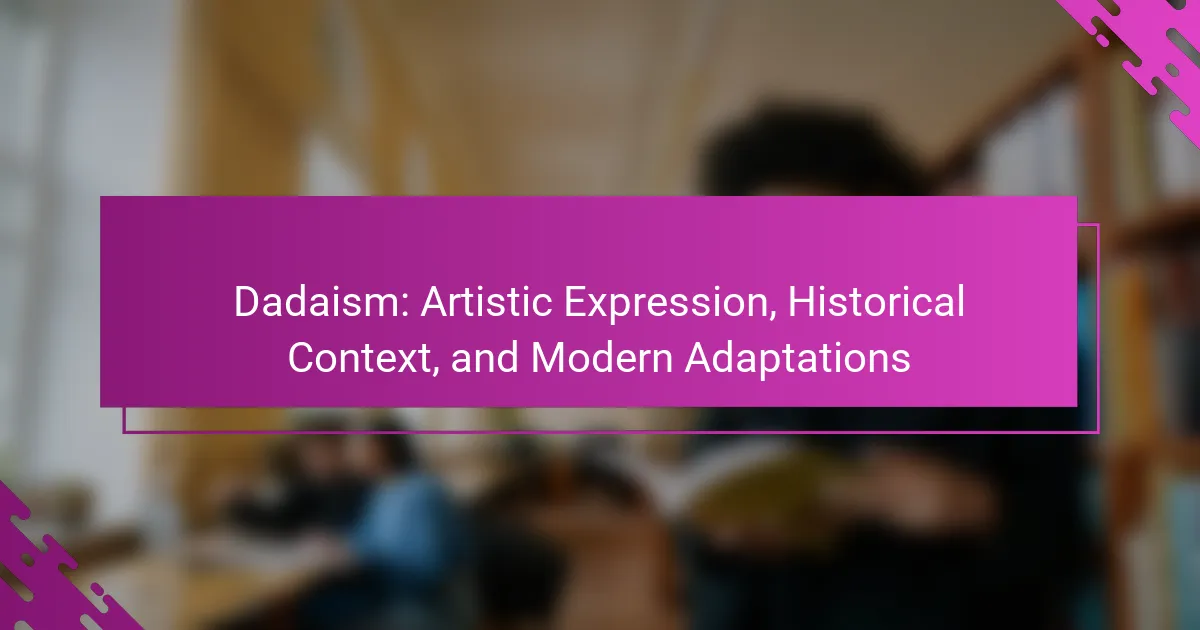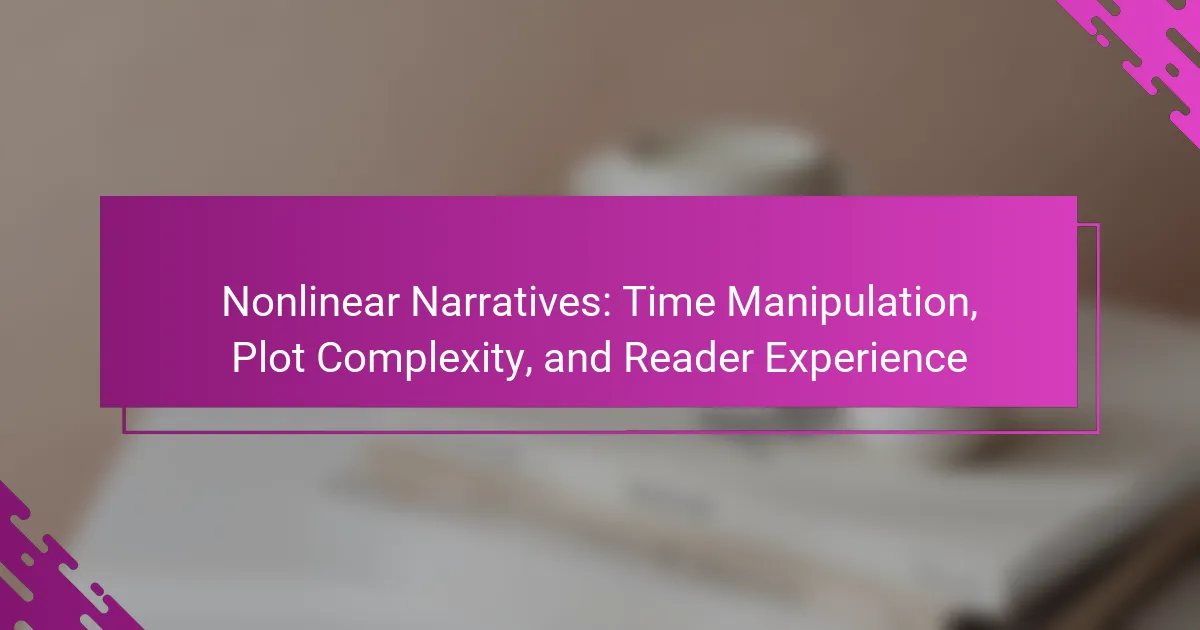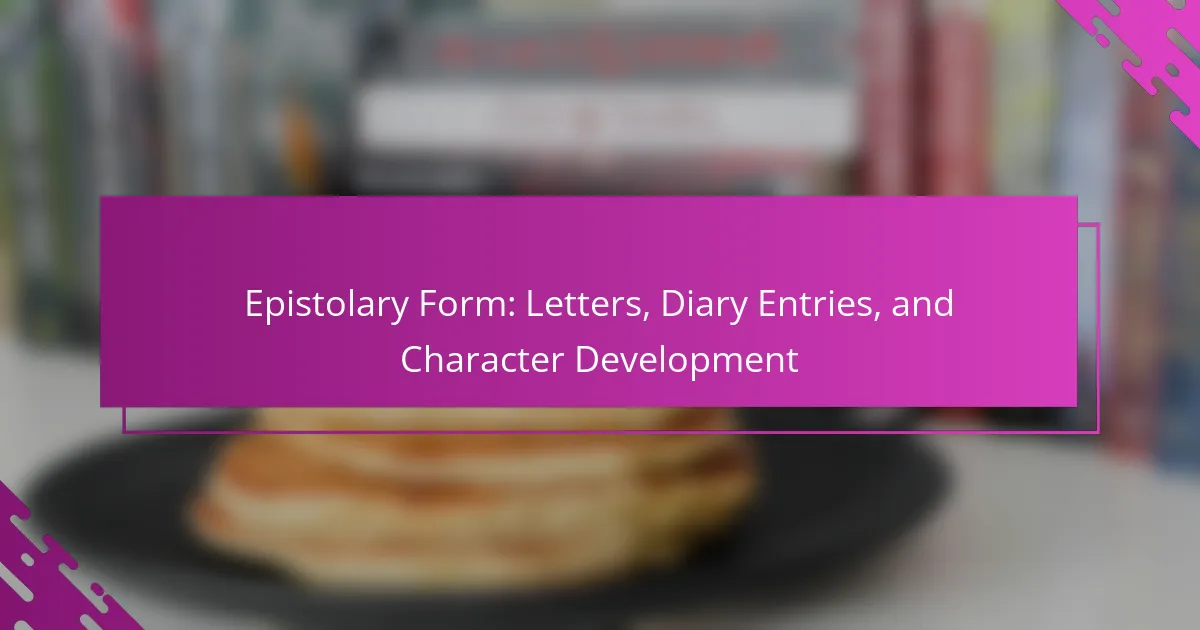Stream of consciousness writing offers a unique way to explore characters’ inner thoughts and emotions. This article examines key techniques such as interior monologue and associative thinking, highlights the psychological depth that enhances character development, and addresses challenges writers face in maintaining coherence. Additionally, it explores the modern evolution of this narrative style and its cultural interpretations across different regions. Aspiring writers will find practical insights to refine their craft and embrace this immersive storytelling technique.
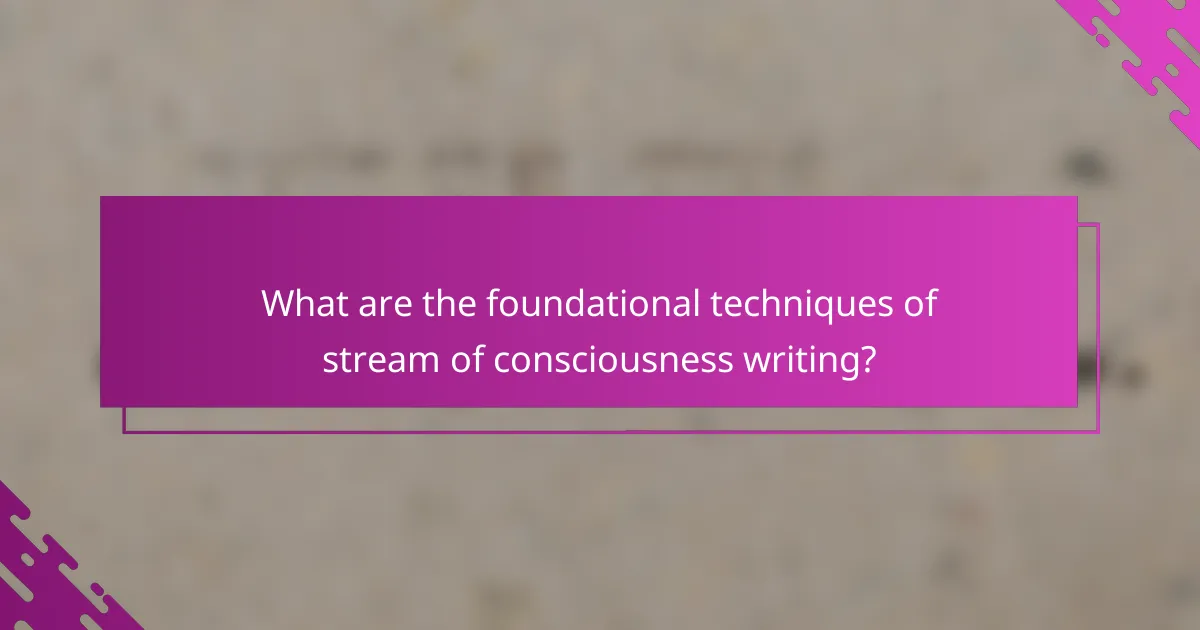
What are the foundational techniques of stream of consciousness writing?
Stream of consciousness writing employs techniques that prioritize free-flowing thoughts and psychological depth. Key techniques include interior monologue, non-linear narrative, and associative thinking. These methods allow writers to capture the complexity of human thoughts, creating a rich narrative flow that reflects characters’ inner experiences. By focusing on raw emotions and fragmented ideas, this style immerses readers in the characters’ minds, enhancing emotional engagement and understanding.
How do these techniques differ across various literary traditions?
Stream of consciousness techniques vary significantly across literary traditions, reflecting cultural and psychological contexts. In modernist literature, such as Virginia Woolf’s works, the focus is on internal monologue and fragmented thoughts, portraying deep psychological experiences. In contrast, American writers like William Faulkner employ nonlinear narratives, emphasizing temporal shifts and layered consciousness. In postcolonial literature, stream of consciousness often intertwines personal and collective histories, as seen in the works of authors like Salman Rushdie, who blend cultural identity with psychological depth. Each tradition utilizes these techniques to explore different facets of human experience, showcasing unique narrative flows and psychological insights.
What role does internal monologue play in narrative flow?
Internal monologue enhances narrative flow by providing insight into characters’ thoughts and emotions. This technique creates psychological depth, allowing readers to connect with characters on a personal level. Stream of consciousness techniques, such as free association, facilitate a fluid narrative that mirrors real-life thought patterns. As a result, internal monologue can drive the plot forward by revealing motivations and conflicts, enriching the overall storytelling experience.
Which authors are renowned for their mastery of stream of consciousness?
Renowned authors for their mastery of stream of consciousness include James Joyce, Virginia Woolf, and William Faulkner. Joyce’s “Ulysses” exemplifies intricate narrative flow, while Woolf’s “To the Lighthouse” explores psychological depth. Faulkner’s “The Sound and the Fury” showcases unique narrative techniques that enhance character perspectives.
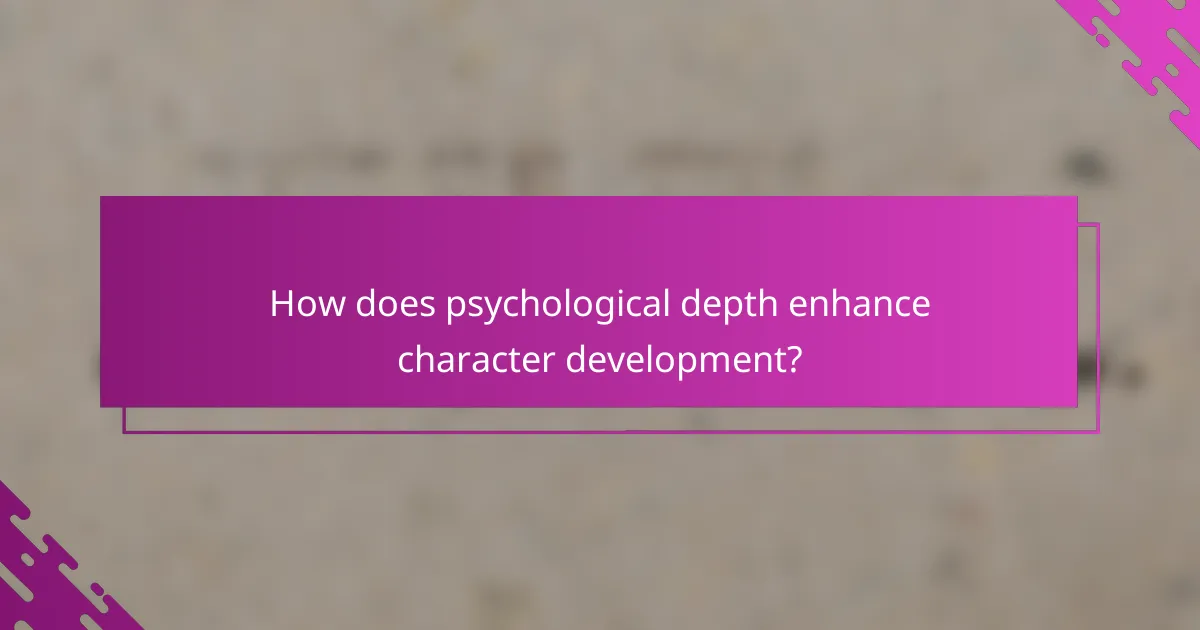
How does psychological depth enhance character development?
Psychological depth enhances character development by creating multi-dimensional personalities that resonate with readers. This depth allows for a more immersive narrative experience, as characters exhibit realistic thoughts, emotions, and motivations. Techniques such as stream of consciousness reveal inner conflicts and thoughts, providing insight into their psyche. As a result, characters become relatable and dynamic, driving the narrative forward. This engagement fosters a stronger connection between the reader and the character, enriching the overall story.
What psychological theories underpin stream of consciousness writing?
Psychological theories underpinning stream of consciousness writing include the principles of free association and the exploration of the unconscious mind. These theories emphasize the fluid nature of thought and the nonlinear progression of ideas. Influential figures such as Sigmund Freud and William James contributed to understanding how inner experiences shape narrative form. Stream of consciousness techniques reflect the complexities of human cognition, showcasing fragmented thoughts and sensory experiences, which align with modern psychological insights into perception and memory. This narrative style allows for deep psychological exploration, revealing characters’ inner lives and emotional states.
How can psychological depth influence reader engagement?
Psychological depth significantly enhances reader engagement by creating emotional connections and immersive experiences. Techniques like stream of consciousness allow readers to access characters’ inner thoughts, fostering empathy and understanding. This depth invites readers to reflect on their own experiences, making the narrative more relatable and impactful. Engaging narratives often utilize psychological depth to explore complex themes, drawing readers into a more profound exploration of human behavior and emotions.
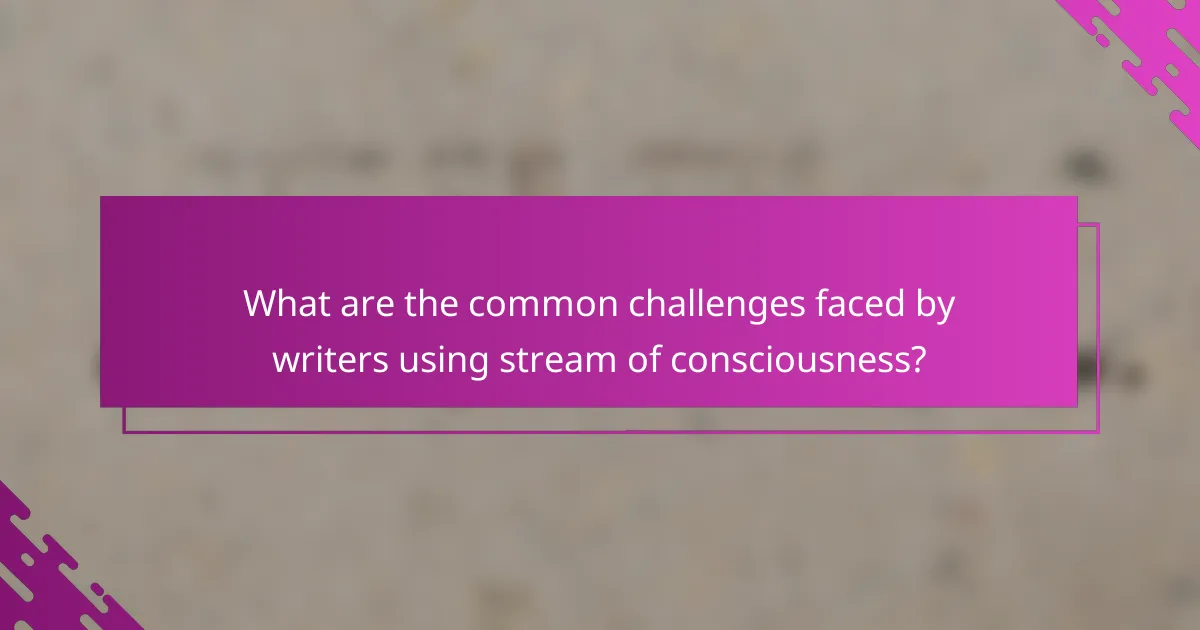
What are the common challenges faced by writers using stream of consciousness?
Writers using stream of consciousness often face challenges such as maintaining narrative coherence, managing reader engagement, and balancing character thoughts with plot progression. These difficulties arise from the technique’s inherent complexity and fluidity.
One common issue is the potential for disjointedness, where the narrative can become too fragmented for readers to follow. This can lead to confusion and disengagement. Additionally, writers may struggle with the psychological depth required to authentically capture characters’ inner thoughts without overwhelming the reader.
Another challenge is the risk of excessive introspection, which can stall the plot and diminish action. Writers must find a balance between character reflections and advancing the storyline. Lastly, the unique attribute of stream of consciousness—its emphasis on the continuous flow of thoughts—can create a rare difficulty in editing, as maintaining the original voice while refining clarity is often complex.
How can writers effectively overcome these challenges?
Writers can effectively overcome challenges in stream of consciousness by embracing techniques that enhance psychological depth and narrative flow. Utilizing free writing allows thoughts to flow unfiltered, fostering authenticity. Structuring narrative with intentional breaks can guide readers through complex ideas, ensuring clarity. Employing sensory details enriches the emotional landscape, drawing readers into the character’s inner world. Lastly, revising with a focus on rhythm and pacing helps maintain engagement, allowing the narrative to resonate.
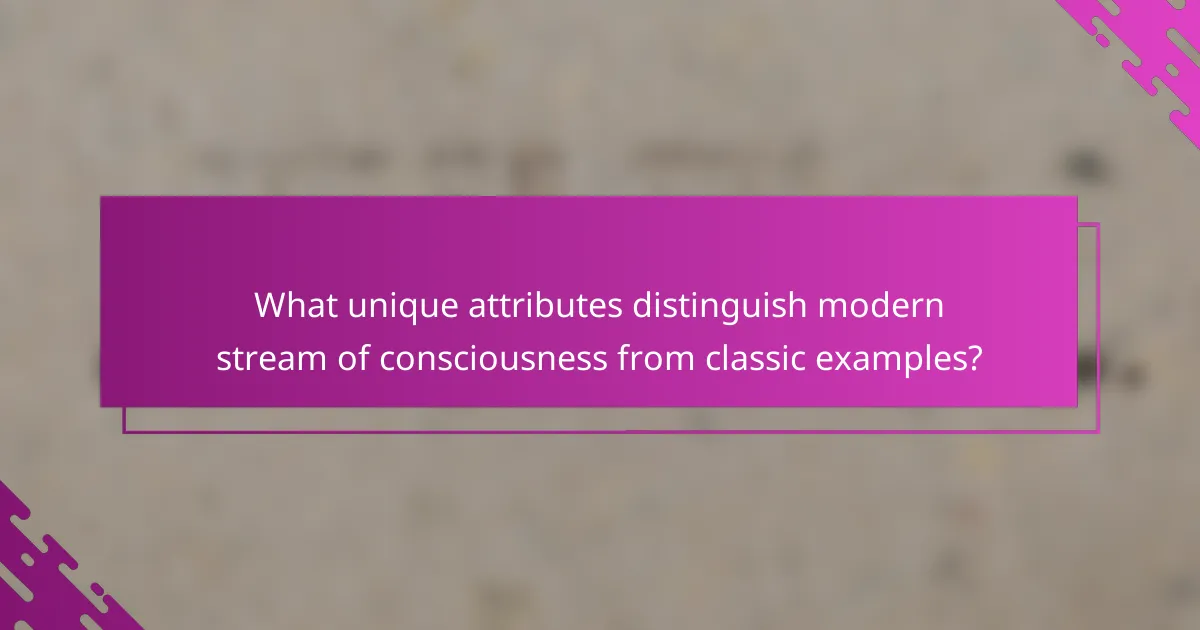
What unique attributes distinguish modern stream of consciousness from classic examples?
Modern stream of consciousness is distinguished by its emphasis on psychological realism and fragmented narrative structures. Unlike classic examples, contemporary works often incorporate nonlinear timelines and diverse perspectives. This approach reflects a unique attribute of modern literature, prioritizing emotional depth and subjective experience over traditional plot coherence. Additionally, modern authors frequently utilize digital and multimedia influences, enhancing the narrative flow through varied forms of expression. These innovations create a distinct reading experience that diverges from the more linear and structured classic examples.
How have contemporary themes influenced the narrative flow in recent works?
Contemporary themes have significantly shaped the narrative flow in recent works through innovative stream of consciousness techniques. These techniques enhance psychological depth, allowing readers to experience characters’ thoughts and emotions in real-time. As a result, narratives often become more fragmented and nonlinear, reflecting the complexities of modern life. This shift enables authors to explore unique attributes of characters, such as their inner conflicts and perceptions, in ways that traditional storytelling methods cannot achieve.
Which innovative formats are emerging in stream of consciousness literature?
Innovative formats in stream of consciousness literature include fragmented narratives, non-linear timelines, and multimedia integration. These techniques enhance psychological depth and narrative flow, allowing readers to experience characters’ thoughts more intimately. For example, authors may use visual elements or varying text layouts to reflect mental states.
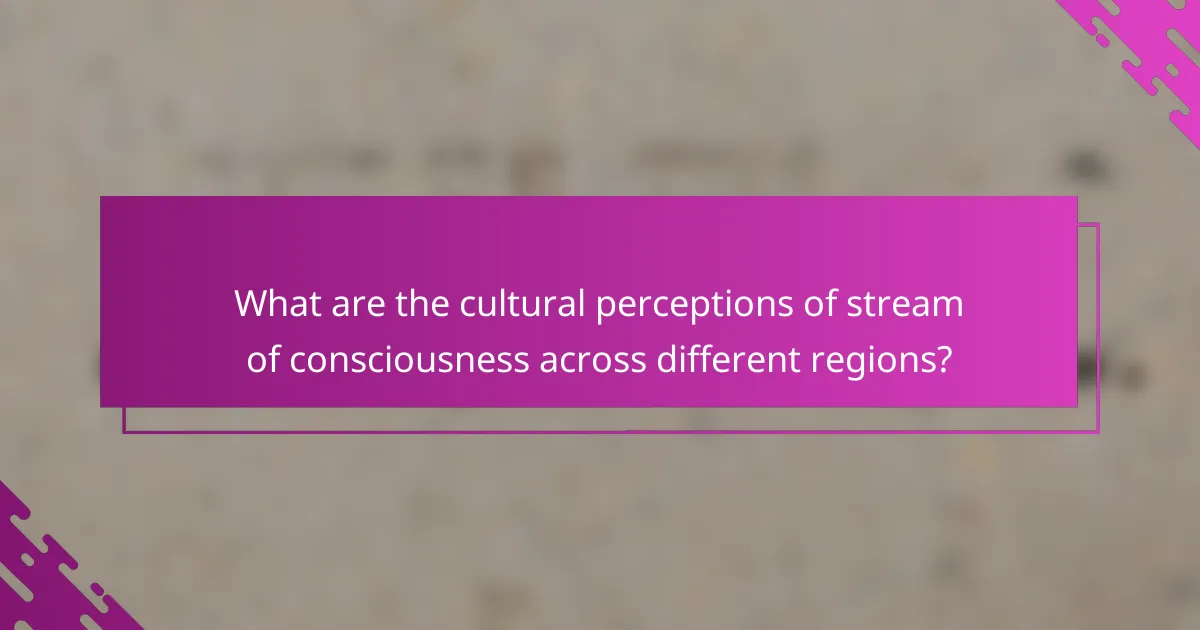
What are the cultural perceptions of stream of consciousness across different regions?
Cultural perceptions of stream of consciousness vary significantly across regions. In Western literature, it often symbolizes psychological depth and individual experience. In contrast, some Eastern narratives emphasize collective consciousness and interconnectedness.
In the United States, writers like Virginia Woolf and James Joyce popularized this technique, focusing on internal monologues and fragmented thought to explore identity. European interpretations often highlight existential themes, reflecting societal shifts and personal alienation.
Asian literature may incorporate stream of consciousness to illustrate the fluidity of thought and cultural heritage. This approach can convey harmony with nature or the complexities of family relationships.
Overall, the technique’s reception and application reflect each culture’s unique values and storytelling traditions, shaping how narratives unfold across different regions.
How does regional literature shape the interpretation of this narrative style?
Regional literature significantly influences the interpretation of stream of consciousness by reflecting cultural nuances and psychological depth. This narrative style captures inner thoughts, often shaped by local contexts. For example, authors like Virginia Woolf and James Joyce utilize regional settings to enhance emotional resonance. Their works demonstrate how cultural backgrounds inform character development and narrative flow. Additionally, regional dialects and social issues enrich the psychological layers, making the narrative more relatable and profound. This interplay between regional literature and stream of consciousness creates a unique reading experience that varies across different cultures.
What are the implications of digital media on stream of consciousness writing?
Digital media enhances stream of consciousness writing by offering new platforms for expression and immediacy. It allows writers to capture thoughts in real-time, reflecting psychological depth and fluid narrative flow. The immediacy of digital platforms encourages spontaneity, enabling a unique attribute of authenticity in writing. Additionally, multimedia elements can enrich the narrative, providing rare sensory experiences that deepen reader engagement. Overall, digital media transforms traditional techniques into dynamic, interactive forms of storytelling.
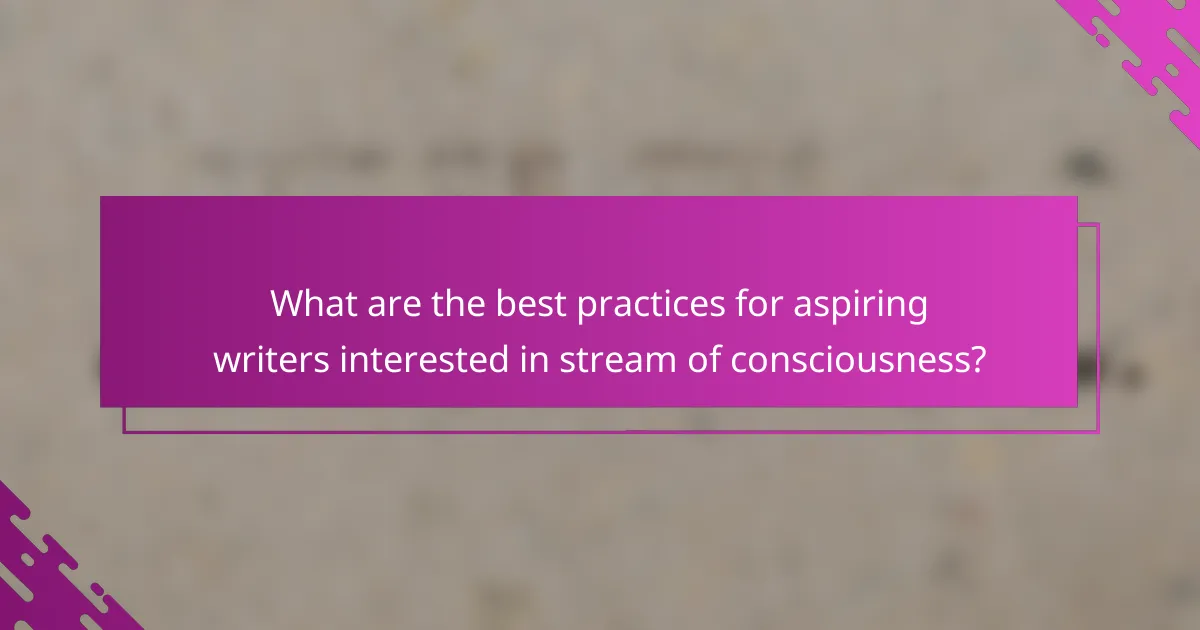
What are the best practices for aspiring writers interested in stream of consciousness?
Aspiring writers interested in stream of consciousness should focus on authenticity, sensory details, and emotional depth. Embrace free-flowing thoughts to capture the character’s inner voice. Experiment with punctuation and structure to enhance narrative flow. Reading works by authors like Virginia Woolf and James Joyce provides valuable insights into effective techniques. Practice regularly to refine your style and develop a unique voice.
Which common mistakes should be avoided in this narrative style?
Avoiding common mistakes in stream of consciousness writing is essential for clarity and engagement. Key pitfalls include excessive digression, leading to confusion; lack of structure, which can disrupt narrative flow; and overwriting, resulting in reader fatigue. Additionally, neglecting character voice can dilute psychological depth, while failing to maintain a consistent tone may disengage the audience.
How can writers refine their voice within this framework?
Writers can refine their voice by embracing techniques of stream of consciousness, enhancing psychological depth, and improving narrative flow. Focus on immersive experiences that reflect inner thoughts. Use varied sentence structures to convey emotions and thoughts fluidly. Experiment with rhythm and pacing to enhance reader engagement. Incorporate sensory details to create vivid imagery, allowing readers to feel the narrative. Finally, practice consistently, revising drafts to discover and strengthen personal voice.
